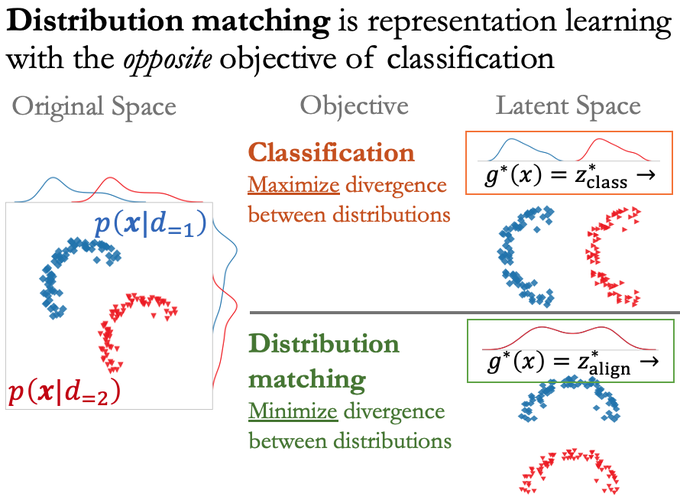Distribution matching (DM, also known as distribution alignment or domain-invariant representation learning) has the opposite objective of classification. While classification finds a representation that separates two distributions, DM finds a representation that brings together two distributions. DM has been used to enhance robustness or enforce constraints in many recent machine learning applications including domain generalization, causal discovery, and fair representation learning. Despite these important applications, DM research lacks a unified and systematic conceptual framework and has primarily focused on GAN-based adversarial alignment for images. To address this gap, we aim to develop a unifying DM framework that encompasses DM fundamentals, applications, algorithms, and evaluations. Specifically, we aim to formalize the definition of distribution matching, develop novel non-adversarial DM algorithms, and discuss DM applications in causal discovery and domain generalization. Ultimately, this project aims to advance the science of distribution matching to enable the next generation of trustworthy and robust AI systems.
Conditional distribution alignment
Distribution Matching
 Conditional distribution alignment
Conditional distribution alignment
Distribution Matching
Publications
Benchmarking Algorithms for Federated Domain Generalization
While prior federated learning (FL) methods mainly consider client heterogeneity, we focus on the Federated Domain Generalization (DG) …
Towards Practical Non-Adversarial Distribution Matching
Distribution matching can be used to learn invariant representations with applications in fairness and robustness. Most prior works …
Efficient Federated Domain Translation
A central theme in federated learning (FL) is the fact that client data distributions are often not independent and identically …
Cooperative Distribution Alignment via JSD Upper Bound
Unsupervised distribution alignment estimates a transformation that maps two or more source distributions to a shared aligned …
Iterative Alignment Flows
The unsupervised task of aligning two or more distributions in a shared latent space has many applications including fair …




